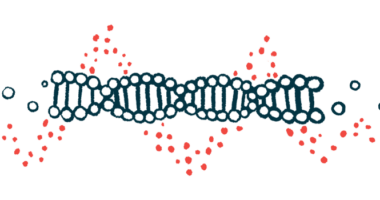Problems in Neuronal Activation, Complexity Seen in Rett Model

Neurons activated at the same time — a state called neuronal synchrony — and with lesser complexity in the relationships between nerve cells of the brain and the body may contribute to the aimless and repetitive movements of Rett syndrome, a recent animal study suggests.
The study, “Collapse of complexity of brain and body activity due to excessive inhibition and MeCP2 disruption,” was published in the journal PNAS.
Stereotypic, or repetitive, hand movements are common in people with Rett syndrome, a disease largely due to problems with the MeCP2 protein. Studies have linked these abnormal movements with problems in excitatory and inhibitory neuronal circuits. Excitatory signals raise the likelihood that a neuron fires an action potential to the next neuron, activating it, while inhibitory signals have the opposite effect.
Activity among neurons in the brain, and between movement-related neurons and the body, are highly complex interactions necessary for movement. This complexity can be affected by too much synchrony among neurons, possibly due to an imbalance in excitatory/inhibitory signals. However, it is unclear whether excessive neuron synchrony is related to difficulties seen in Rett patients.
To address this, scientists at the University of Arkansas recorded neural activity in a rat model of Rett syndrome.
“We hypothesized that both MeCP2 disruption and excessive inhibition lead to reduced complexity of interactions between cortical neurons and body movements, excessive cortical synchrony, and reduced complexity of body movements,” the investigators wrote. Cortical neurons are found in the cerebral cortex, the outermost part of the brain that is associated with complex mental capabilities, and consists of sensory and motor areas.
Electrodes were placed on the motor cortex, a region responsible for voluntary movements, to target neurons linked with hindlimb, forelimb, and trunk control in the rats. These electrodes pick up neuron activity, or action potentials, which are represented as spikes.
A first study objective was to quantify the relationships between neurons and body movements. To do so, the scientists assessed how neurons fired in relation to different movements by looking at the shape of the produced spikes. According to the researchers, “the shape of [the spikes] reveals whether and how the trigger neuron leads or lags body movement.”
Data showed that Rett model rats appeared to have spikes that were stereotypy, which considers a correlation between neuron activity and body movement, while healthy rats had more varied types of spikes.
The investigators quantified stereotypy associated with motor signals and found it was higher among rats with a Rett-like disorder. Muscimol, a compound that enhances inhibitory signaling, lessened movement and significantly increased stereotypy.
Next, the team quantified the complexity of neural activity by evaluating the degree of synchrony.
“We interpret higher levels of synchrony as less complex neural activity,” the researchers wrote. Synchrony in Rett rats was significantly higher than in healthy animals. When inhibitory signaling was enhanced with muscimol, synchrony levels also increased. A second analysis supported these results.
The complexity of neural activity was also quantified by analyzing how the trigger neuron promotes or delays the activity of other neurons within the network. This was collectively defined as intracortical stereotypy.
In healthy rats, some neurons led while others lagged the nerve cell network. However, in disease rats, every neuron tended to behave the same way with the rest of the population. Application of muscimol significantly increased intracortical stereotypy in both healthy and Rett rats.
To explore the relationship between the complexity of neural activity and that of body movements, a tracking system made up of beads was attached to the neck, spine, hips, and on the base of the rats’ tail. A higher correlation of body movement was evident in Rett rats than in healthy rats. Using muscimol did not impact body movement correlation in the Rett group.
These findings were backed up by using B-SOiD, a machine-learning algorithm that analyzes behaviors. The researchers found that entropy, which in this study was a measure of behavior complexity, was highest in healthy rats, indicating high complexity. It was lower in Rett model and muscimol-treated rats, supporting low complexity.
“Our work highlights the complex role of synchrony and high dimensional interactions in motor system function and dysfunction. We show that MeCP2 disruption can lead to excessive synchrony and a collapse of complexity in the relationships among cortical neurons and the relationships between neurons and the body,” the investigators wrote.
“Our findings suggest that stereotypy at the level of motor coding may play a role in the stereotyped body movements of Rett syndrome,” they concluded.







